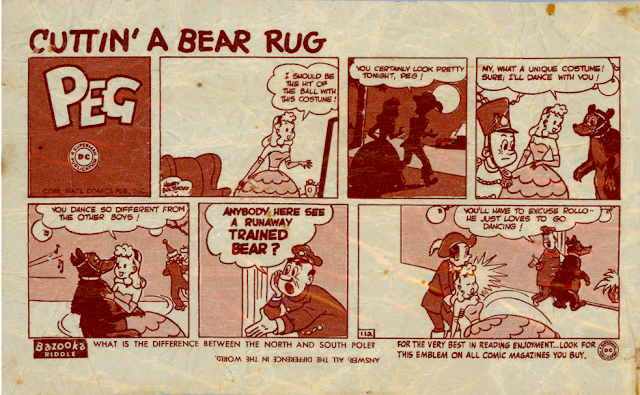As longtime readers of this blog know, I've been trying to document the various comics Topps included with Bazooka before Bazooka Joe became their ne plus ultra. From roughly 1947 to 1949 Topps issued a seemingly long series of sepia five-cent comics featuring mostly funny animals and humorous characters from DC Comics. They mixed in some other, non-DC stuff during this period so things look pretty random sometimes. The length and cast of characters for the DC series (or any pre-Joe comic for that matter) is indeterminate but seemingly extensive as they pop up more frequently (a relative term, these are hard to find) than most others of the period and new subjects often appear when this happens.
Case in point, numbered and unnumbered DC series exist and all are from the foil-wrapper nickel rolls, which both pre-and-post date the DC's. The five cent foils ended with the second release of the Bazooka Joe's in 1954, which were duo-tone essentially, and followed on the heels of a sepia-toned Joe. Penny foils ended a little earlier, probably in late 1953 but I have not seen any sepia DC's in one-cent form (given the nature of the strips, this is not surprising) and Topps seems to have let a divergence occur between the one and five cents comics at some point during the DC run as some other issues could be found in penny and nickel pack versions. As for the five-centers, let's take a look at some of the DC's.
"Peg" no. 112. The series likely starts at #101 but that is very much unconfirmed and is also useless in determining if an even one hundred comics came before.
#115 finds "Lad and Dad" pushing a familiar Topps product in a way:
Dig that inked in July 1949 date! "Jerry the Jitterbug" at #123 resembles, at least to me, a very milquetoast version of Harold Teen:




























